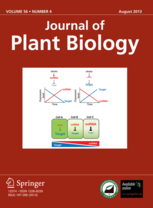MENUMENU

Research > Scientific Contributions
Giorgi A., Panseri S., Nanayakkarawasam Masachchige C., Chiesa L.M.
A Headspace Solid-phase Microextraction (HS-SPME) method combined with Gas Chromatography-Mass Spectrometry (GC/MS) was developed and optimized to extrat and analyze the volatile compounds of aerial parts of Achillea collina Becker ex Rchb. and to investigate the effect of the phlem feeding aphid Myzus persicae Sulzer on the Volatile Organic Compounds (VOCs) emitted by the infested plants. The extraction of 1 g of powdered freeze dried plant samples for 120 min at 30°C using divinylbenzene-carbowax-polydimethylsiloxane (DVB/CAR/PDMS) fiber showed the highest area counts for the majority of the volatile compounds. Overall, 62 and 80 volatile compounds were detected in control and infested plant samples respectively. In A. collina infested plants, we observed a great increase in both monoterpenes and sesquiterpenes fractions. Several changes among alcohols also occurred, particularly regarding Z-3-hexen-1-ol, E-3-hexen-1-ol and E-2-hexen-1-ol proposing these compounds as herbivore-induces plant volatiles (HIPVs). New perspective for agricultural practice may derive from the opportunity to identify novel herbivores-induced plant VOCs active as plant protection agents.
